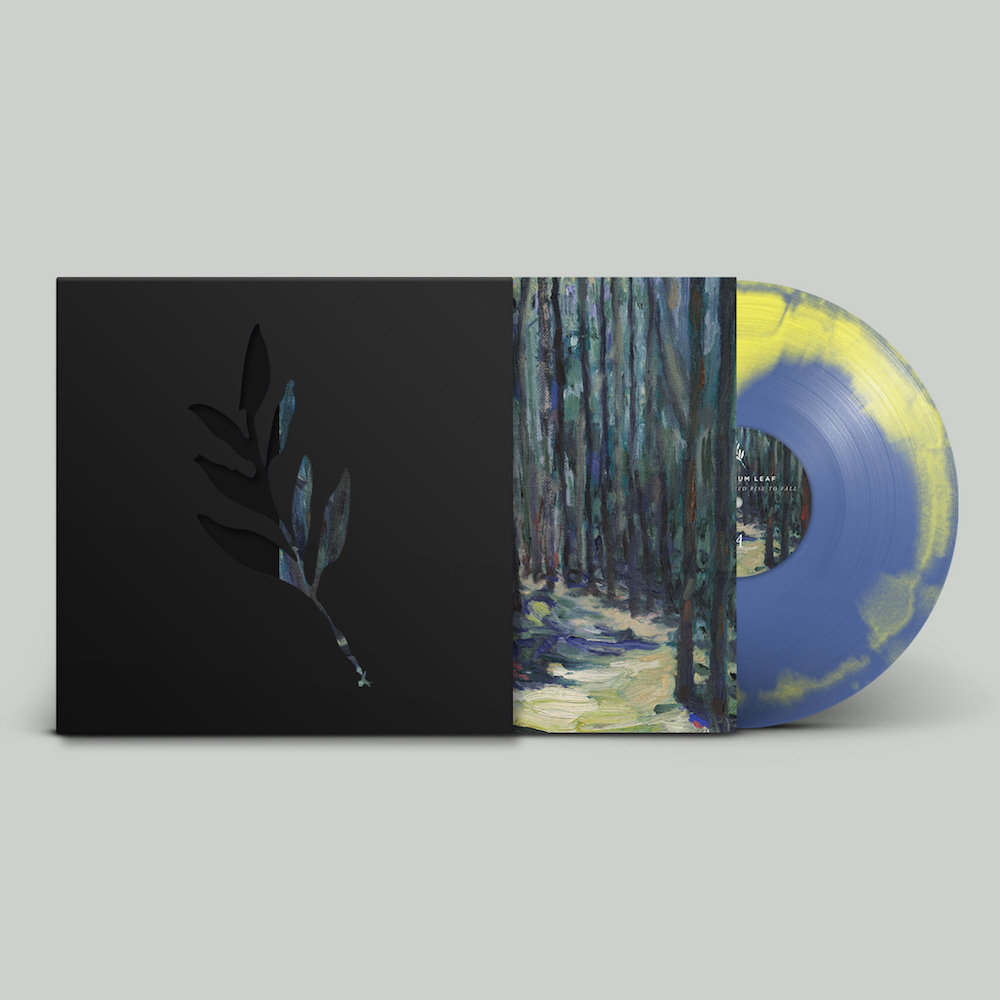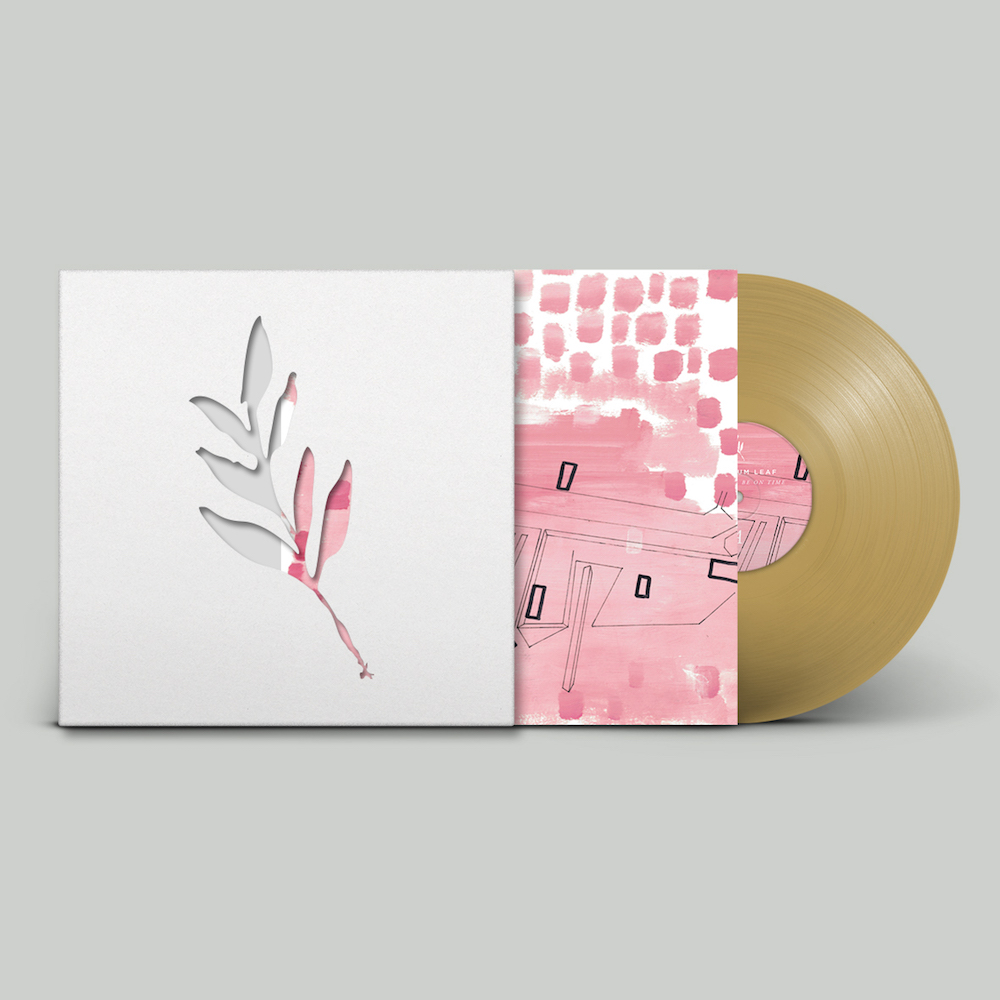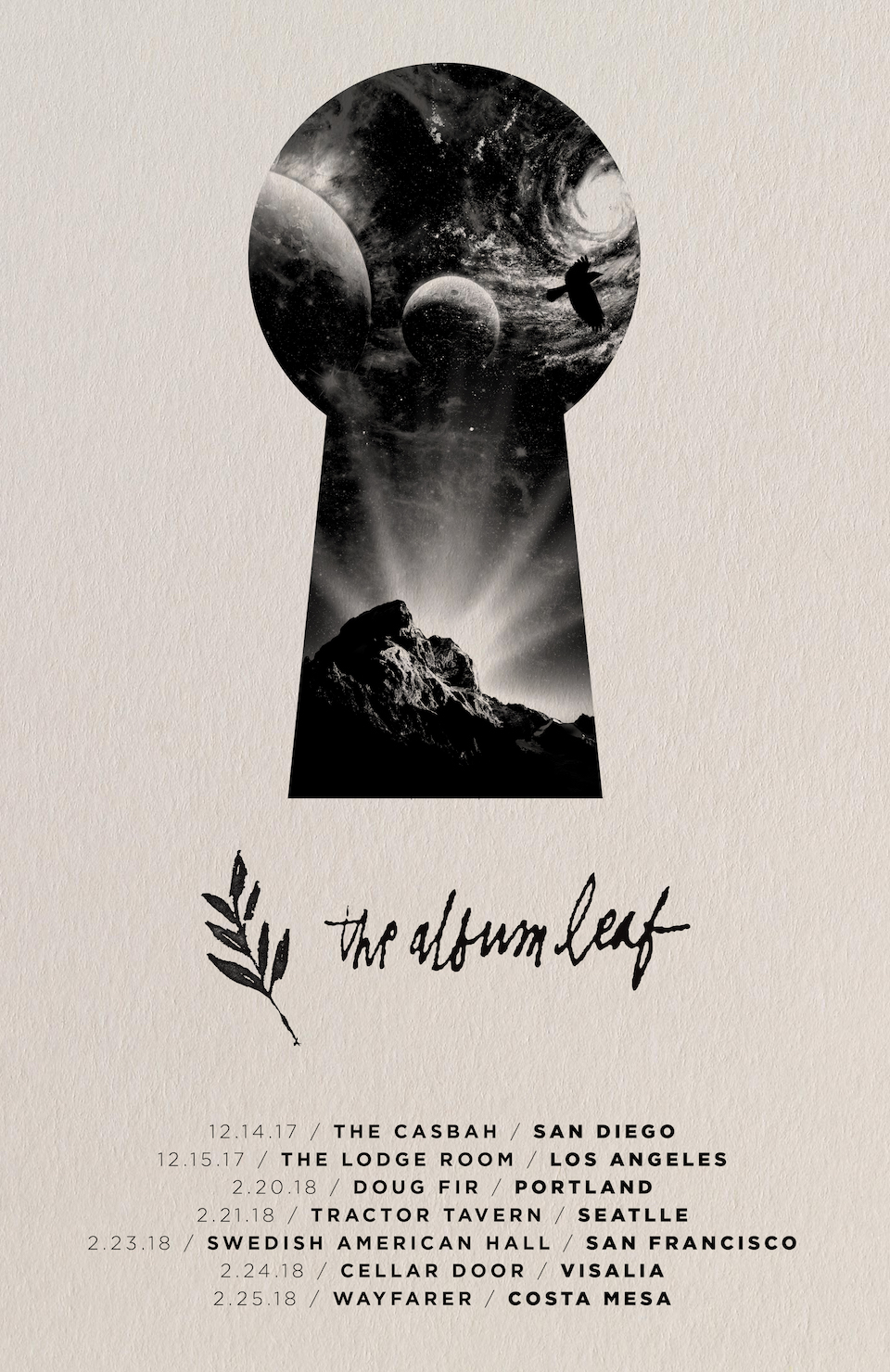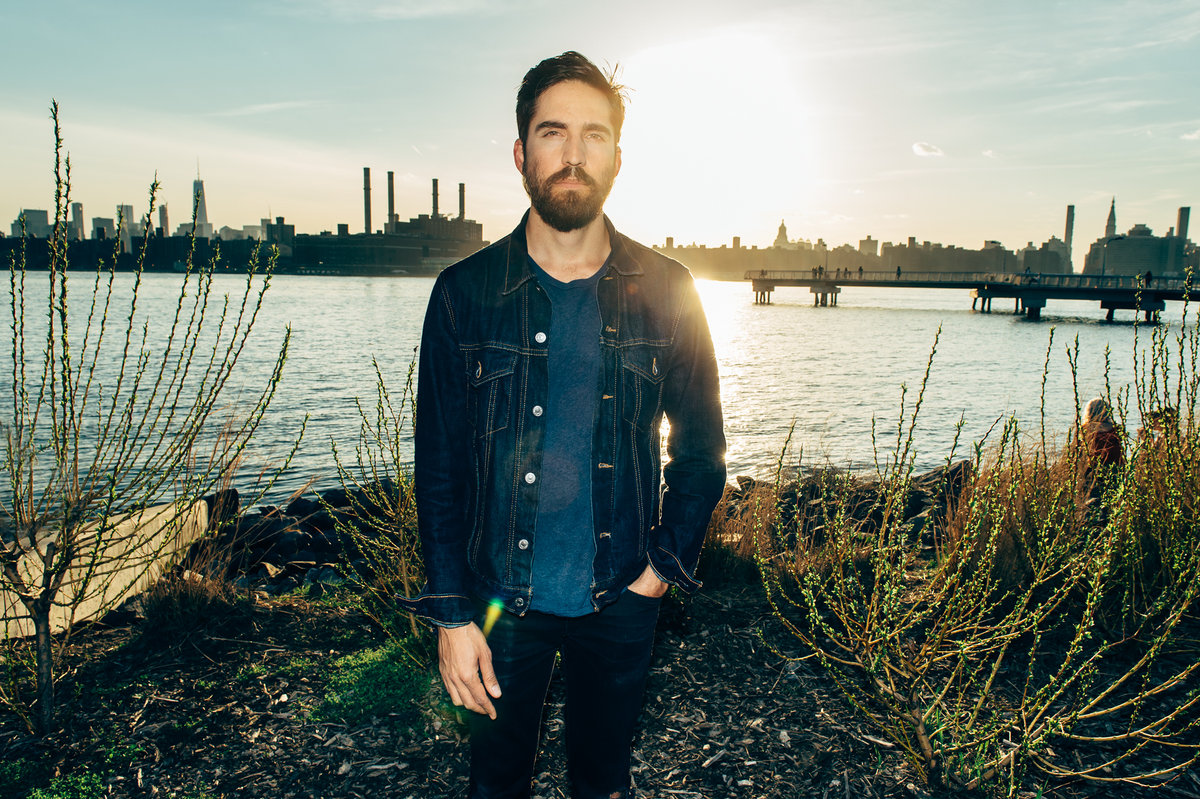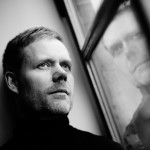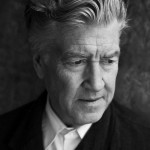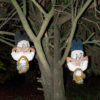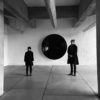In honor of the deluxe vinyl reissues Jimmy LaValle released on his new Eastern Glow Recordings imprint this week, we thought we’d ask the decades-long lynchpin of the San Diego underground to look back at all of his work. Not just the solo and group efforts he’s cut under his popular alias The Album Leaf either; we’re talking everything from the synth-laced grindcore spasms of The Locust to the influential post-rock pieces of Tristeza.
Check out the full breakdown in the exclusive feature below, along with dates for the Album Leaf’s upcoming winter tour….
GUYVER-ONE
GUYVER-ONE (*INCHWORM., 1996)
This was the first official ‘record’ I made. The core of the band had been together about a year before Kory [Ross] and I joined on guitar, so most of these songs were written before then. But the opening track, “Blurden,” was the first hardcore punk song I wrote. We recorded this record in about four hours at the infamous San Diego studio called Doubletime run by Jeff Forrest. He did most of the San Diego hardcore records back in those days; you can hear him say “rolling” on the first Antioch Arrow LP (1993’s The Lady is a Cat).
Anyway, I was 17 when I joined Guyver and did my first tour out to Michigan Fest and back during the spring break of my senior year in 1996. It was eight dudes all under 21, piled in a van with one bench seat and a loft. Those super dangerous ones from back in the day, too—i.e. plywood and 2×4’s with the gear packed underneath it, so in the event of an accident, not only are you a human missile towards the windshield, if the van flipped, you’d be underneath all the gear.
This tour definitely changed my life…. Seeing the country for the first time, meeting different kids from different hardcore scenes, playing in basements, living rooms, youth centers, and I met Christopher Sprague and Jimmy Lehner who I’d later form Tristeza with. This would be the only tour I did with Guyver. I only played in the band for a couple months as I was also playing in the Locust at the same time.
THE LOCUST
LOCUST / JENNY PICCOLO 5” (THREE ONE G, 1996)
LOCUST EP (GOLD STANDAD LABORATORIES, 1997)
These were good times…. 17 years old, screaming at the top of my lungs, and playing very precise NOISE. The beauty of the Locust is all of the songs were always intricately written and thought-out. There are a lot of chaotic noise breaks in these songs but we we’re all playing the exact same notes very quickly…. I also think my keyboards brought a strong melodic element to the band; it helped them cut through. This was actually the first band I played keyboards in. And the first time I did a full US tour and toured throughout Europe. Each time I toured, I felt less and less isolated. Meeting people from all different walks of life, experiencing different cultures, and being exposed to a lot of music from many communities…. I also got my first tattoo in the basement of a house show we played in Ogden, Utah: “Locust” inside my lower lip.
THE SWING KIDS
My time in the Swing Kids was very short lived. I was brought on to play second guitar to fill out the sound of the last handful of shows they played. I believe it was only 2 (Koos Cafe in Santa Ana and the Che cafe in San Diego) I was a HUGE fan of the Swing Kids so this was a giant honor to play with them. The records they made, sounded so clean and the songwriting was amazing. it was a punk band that you could make sense of. Also of bands back then sounded really noisy live while the swing kids sounded spot on all the time. I started going to their shows back in 95/96 and definitely looked up to them. Meeting these group of people has shaped my music career.
THE CRIMSON CURSE
GREATEST HITS (THREE ONE G, 2001)
While still in the Locust, Justin Pearson (The Locust/Swing Kids), Mike Cooper (drummer of Guyver-One), Christopher Sprague (Constantine Sankhati/Tristeza) and I formed The Crimson Curse. We wanted to offend people at shows; we wanted them to be nuts. There are a lot of crazy videos on YouTube of this band. Christopher and I wrote the majority of the music (Mike Cooper wrote a handful of songs, too) and we didn’t do much touring outside of California. I’m not sure why, but we were pretty short lived. We put out our full discography on a single record and called it Greatest Hits.
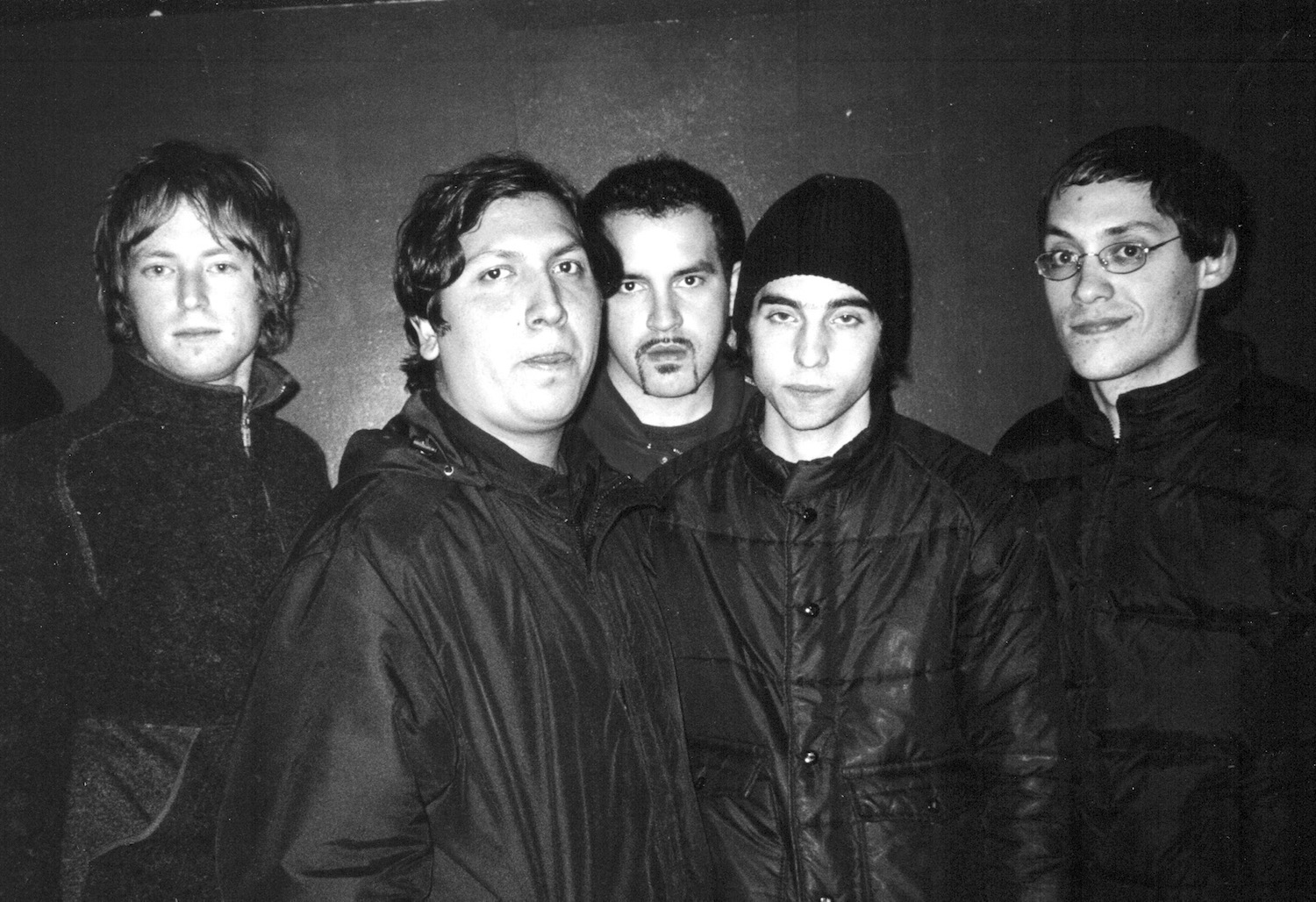
TRISTEZA
FORESHADOW / SMOKE THROUGH GLASS 7” (CAFFEINE VS. NICOTINE, 1998)
Christopher and I were playing and writing together in the Crimson Curse and were also roommates. In 97, we started listening to Nick Drake and Red House Painters and that inspired us to get into alternate tunings and arpeggiated guitar playing. In the Crimson Curse, it was all about punk, so we’d stay up late playing guitar writing a whole batch of songs and started Tristeza. We played our first show in our living room with our friend Joan of Arc from Chicago in the summer of ’97. Early in 1998, we recorded our first 7-inch that our friend put out for us. That started an immense amount of touring. We’d be out for six-to-eight weeks at a time. Rent was cheap, gas was cheap, sleeping on living room floors was free, so we made it all work.
[youlist pid=”PLDWFWlptrN4-dtJiCZvbrxgfBvSbVLXYR” width=”620″ height=”349″]
SPINE AND SENSORY (MAKOTO RECORDINGS, 1999)
During the fall of ’98, we spent a week in San Francisco recording Spine and Sensory with Tim Green at his studio, Louder. It was in his basement in South San Francisco, and was the length of the entire house. This was really the first time I ever experienced having time to make a record. We had been playing a lot of the songs on the record for a very long time so the idea came up to have me record my piano version of “Cinematography.” This is kind of the first song I ever recorded solo in a studio. Aside from the synth chords, I recorded all the parts on this song. It’s nice to listen back to this and while realizing it was my first solo recording in a studio.
[youlist pid=”PLcCJDfsA8fzOs2FIWyAvcL8s0qpaPCxwq” width=”620″ height=”349″]
DREAM SIGNALS IN FULL CIRCLES (TIGER STYLE, 2000)
After years of solid touring and signing to Insound’s newly started label Tiger Style Records, we decided to spend two weeks in Chicago at Dave Trumfio’s Kingsize Sound Labs Studio to make the Dream Signals record. While Louder Studios was great, being in this studio was a very exciting experience. It had a lounge, multiple mix rooms, a large wooden tracking room, a tricked-out control room, etc. And it was the first digital recording on Pro Tools we made. It felt like a studio you’d see in magazines.
We were also huge fans of the Chicago music scene. Bands like Tortoise, Sea and Cake, UI, US Maple, and Isotope 217 had a huge influence on us, so being there—hanging in the bars and going to shows while making this record—had a huge effect on us. This was the last album I made with Tristeza and I feel like it was a huge shift in my career. The band started to get recognized, we toured a lot, we started to sell out shows, we were on a label from New York, etc. It felt very real—like we did something right and were finally getting noticed and respected by peers and other bands we looked up too. This was really the first record that I did a lot of overdubs and adding things like doubling melody lines on a Moog synth. “City of the Future” was actually finished during mastering. We had recorded the idea, looped it, and I did all of the overdubs in the mastering room. I learned a lot about making a record during this session.
[youlist pid=”PL2hQ7o6BVFfcGKw5VWeRbSePJi47URokB” width=”620″ height=”349″]
GOGOGO AIRHEART
This was maybe the funnest band I ever played with, and single handedly affected the rest of the music I’ve made. Mike Vermillion and Ashish Vyas were the brains behind this band. They were older, and their music knowledge was deep. I was introduced to more important records and bands by them than anyone else to this day. I played drums in this band. The way we wrote songs was literally by recording our practices to a Fostex 8-track tape machine. We would just “jam” in Mike’s living room and those would be the songs. Later, we’d add the other parts and pieces—guitar overdubs, vocals, keyboards, whatever. The records I made with them included The Things We Need, the “Song For Video” 7-inch, a split LP with Syncopation, and a split CD with 90 Day Men.
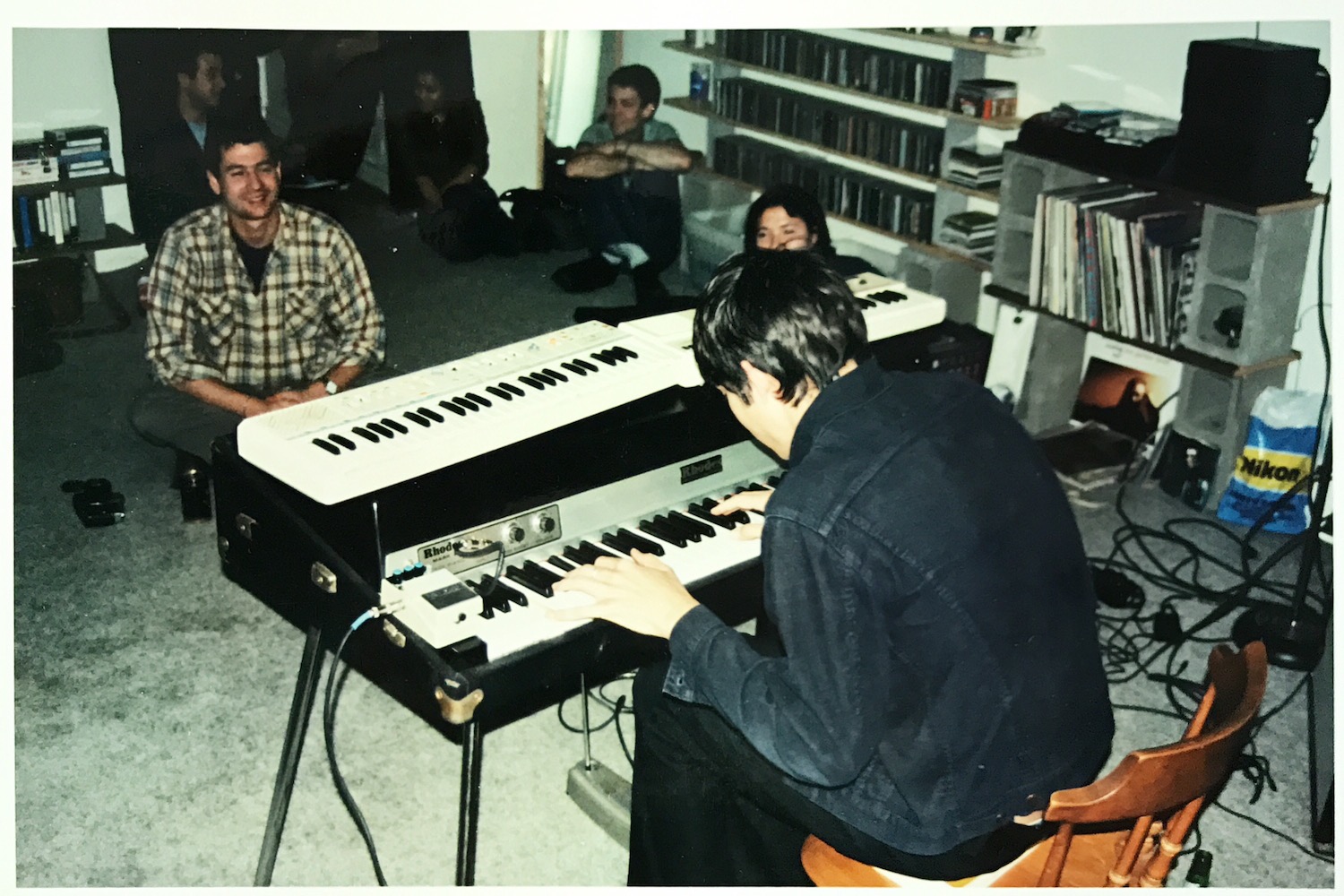
THE ALBUM LEAF
The Album Leaf started from me recording songs on a borrowed Tascam 4-track in my bedroom. I started it while playing in The Locust/Crimson Curse and continued through Tristeza. I did release a tape in 1998—maybe only 20 copies. A friend actually has one. I sold them at Tristeza shows for $2. That was my first official release as The Album Leaf.
[youlist pid=”PL-YnGq4_pC-zqMIZ5GWM8ErllDk1G0Edl” width=”620″ height=”349″]
AN ORCHESTRATED RISE TO FALL (MUSIC FELLOWSHIP, 1999)
So…. While I was playing in GoGoGo Airheart and rehearsing at Mike Vermillion’s house, I would stick around to hang with him and listen to music. He had a Rhodes piano in his living room and I would just start playing it and he would record me improvising. This is what started and turned into this record. I would later go back and overdub drums (you can hear they are off a lot as there was no click track) and Mike would work on the songs too. We unknowingly made a record. I had written a couple songs on guitar for Tristeza that didn’t end up working so they ended up on this record. I recorded “Airplane” sitting on Mike’s porch. He lived in the flight path so you can hear a plane flying over while I was tracking. Teri and Ben (both in GoGoGo at the time) also played on the record.
There was a lot of experimenting with vintage gear. This started a huge love of vintage gear for me. We used a Crumar Perfomer string synth, Roland SH-1000, a Roland CR-78, Space Echo, etc. All improvised. We sped up tape and dumped everything to cassettes. I recorded “A Short Story” in the dining room of my old house on a 4-track and did the overdubs on it later at my friend Rafter’s home studio. Rafter Roberts was one of the first to have a computer set up and was the go to for mastering in town. I learned a lot from him as you’ll hear about below.
So after Tristeza finished Spine and Sensory and were “shopping” the record, we had a lot of offers from a handful of small labels. One of them was the Music Fellowship from Salt Lake City. Darren and I connected musically very well and while Tristeza went with someone else, I offered him this improvised, experimental record I made as the Album Leaf and he released it on CD. With that, I was officially a solo artist released into the world.
[youlist pid=”PLoX0VBHE3rTqH3kxMM3pDYzCsgJ0XlygL” width=”620″ height=”349″]
ONE DAY I’LL BE ON TIME (TIGER STYLE, 2001)
I actually consider this the first Album Leaf LP I actually wrote. I worked on it for a year or so. I had received a small recording advance after signing with Tiger Style, so I bought a small home recording studio setup. It was the first time I really learned about recording. My setup was only my Rhodes (I actually traded a Fender Twin for the Rhodes I used on Orchestrated, and I still have and use it today) a Casio Casiotone MT-45, my Fender Mustang and a Fender Twin.
I recorded the In An Off White Room EP to essentially learn how to record. After I finished it, and well into my writing for One Day, Rafter (Roberts) opened a recording studio in downtown San Diego and started a business doing music for commercials, he hired me as his first composer and I ended up with my own studio within the space. I was able to utilize the gear there to finish the record. You can clearly hear Rafter and I talking to each other in the beginning of “Storyboard.” The live room was still under construction and was just a concrete room. So we set up some mics, opened all the doors, and that’s how I tracked the song. I also recorded the drums for “The MP” and “Asleep” in the same room. Did “Gust Of…” in my little studio room with a Fender Twin and an AKG c414. Also, Jason Soares from the band Physics was the one who first introduced glitchy electronic drum programming into my music. He was very ahead of the time then, really into the glitch scene and doing amazing electronic music. He did the programming for the song “Vermillion” (Also named after Mike Vermillion, who recorded Orchestrated) I used a bunch of my own samples I’d chopped from various places in FruityLoops to do my programming (“Audio Pool,” “In Between Lines”). “The Sailor” was recorded in my apartment in one take as it rained outside. So I put up a microphone in the window and recorded it. I definitely felt like I made something cool with this record….

